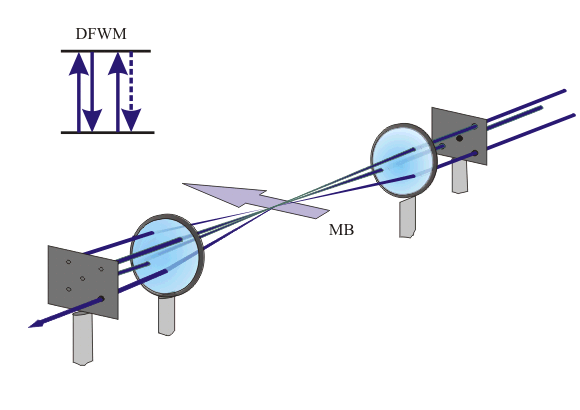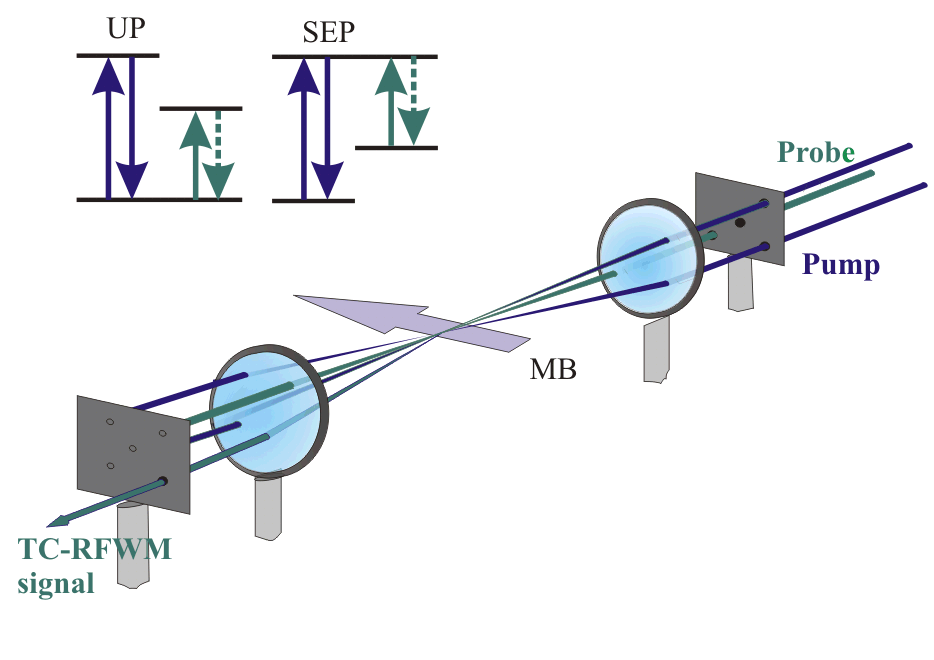Nonlinear Spectroscopy: Four-Wave Mixing
Apart from more conventional linear spectroscopic methods (Absorption, Cavity Ring-Down, Laser-Induced Fluorescence, Multi-Photon Ionization), Degenerate Four-Wave Mixing (DFWM) and its double-resonance variant Two-Color Resonant Four-Wave Mixing (TC-RFWM) are applied.
-
The high signal-to-noise (S/N) ratios resulting from a fully resonant process allows the sensitive and selective detection of stable and transient molecules.
- The coherent, laser-like signal beam ensures collection of the entire signal rather than a small fraction as compared to an incoherent process like Raman scattering or LIF.
- In addition to the high collection efficiency, a coherent signal beam allows the rejection of stray light by remote probing.
- The use of two distinct input frequencies for TC-RFWM provides an added benefit since the signal is obtained only when both frequencies interact with distinct molecular transitions that share a common level.
-
The selectivity of the two-color
technique by intermediate level labeling is advantageous for the
simplification of spectrally congested regions.
-
Furthermore,
rotational characterization of high-lying vibrational states on the
ground potential energy surface is feasible by the stimulated emission
pumping (SEP) capabilities of TC-RFWM.
-
However, the nonlinear method suffers from its quadratic dependence on number density and the cross sections involved. Nevertheless, we demonstrate that the method is applicable to the low density environment of a molecular beam.
Examples from our laboratory
The laser beam is divided into three beams using a combination of optical components to establish a forward boxcar DFWM configuration. The generated beam wave vector, k4, is defined by the phase-matching condition, k1 + k3 = k2 + k4. A quartz convex lens (f = 1000 mm) is used to focus the incident DFWM beams through a window into the molecular beam apparatus ≈ 15 mm downstream from the nozzle tip. The signal beam is recollimated by a second lens (f = 1000 mm) and allowed to propagate roughly 3 m through several irises and optical and spatial filters to remove interfering scattered light and unwanted fluorescence. The signal beam is detected by a PMT.

For the double-resonance
experiment, one of the three incident beams k2 is replaced by a laser
beam of a different frequency (PROBE beam) to establish the forward boxcar
configuration for
TC-RFWM. The equal
frequency input beams k1 and k3
are commonly referred to as PUMP beams.


